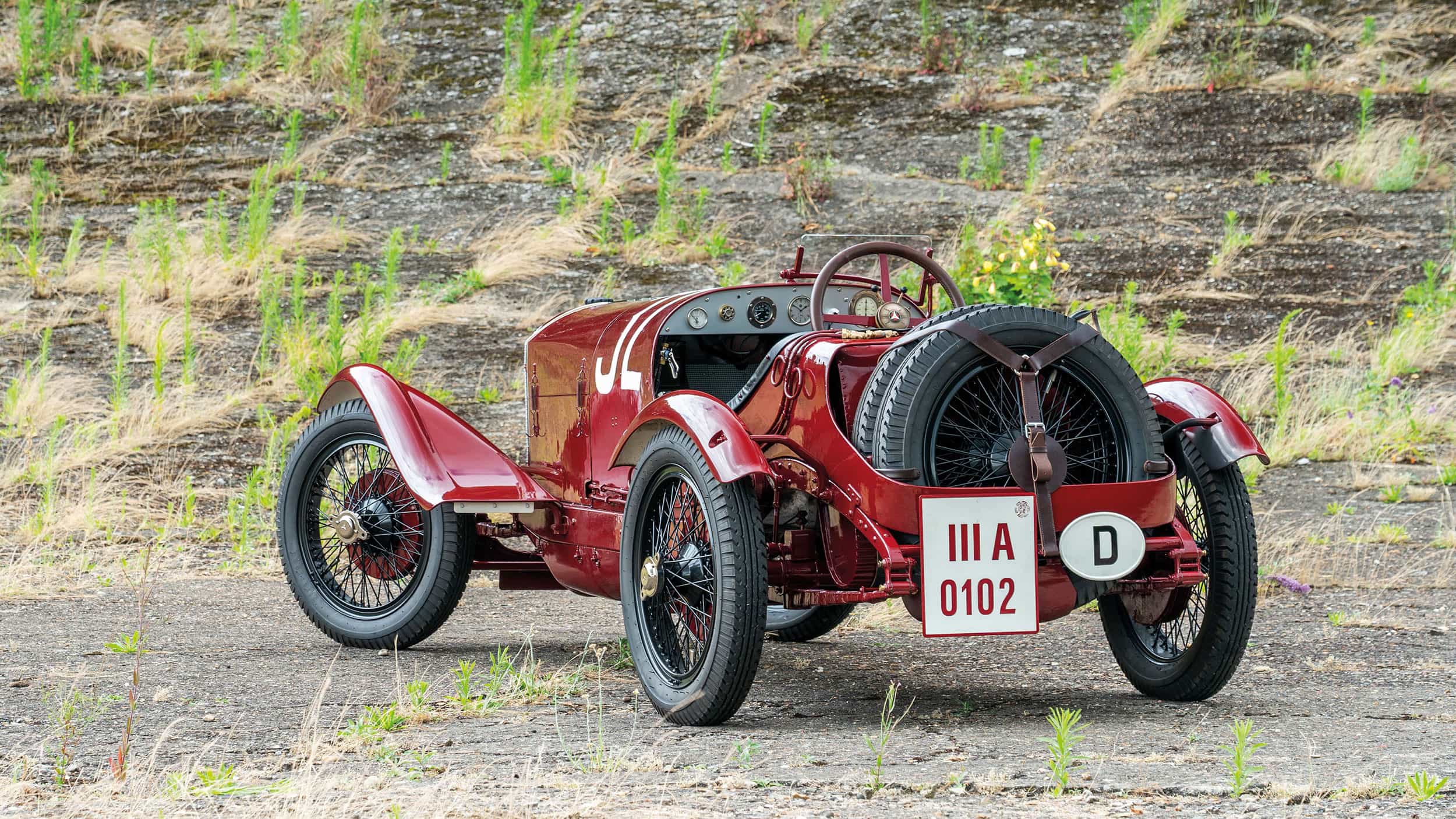Mercedes’ 1924 Targa Florio racer is back on the racing track
In 1924 a Mercedes 2 Litre won the Targa Florio... but that racer’s whereabouts is a mystery. Its sister car, which finished 10th, has been restored and is back in prime condition. Andrew Frankel heads to Brooklands for a date with history
Craig Pusey
The back straight is quite short, but we’re already running out of revs in top gear. The 100-year-old car is now in a proper hurtle, engine bellowing, tyres singing their approval; by contrast I’m running down my checklist of which pedals and levers to press and pull, in which order and at which exact time required for this not-all-about-to-go-horribly, embarrassingly, expensively and reputation-ruiningly wrong. The entry to the corner ahead is clearly visible but not easy: you need to slow, downshift, turn in and turn some more to accommodate its deceptively tightening radius.
The car is priceless, one of two in existence, the men who have spent the last two years restoring it are all watching and you really, really do not want to mess this up.
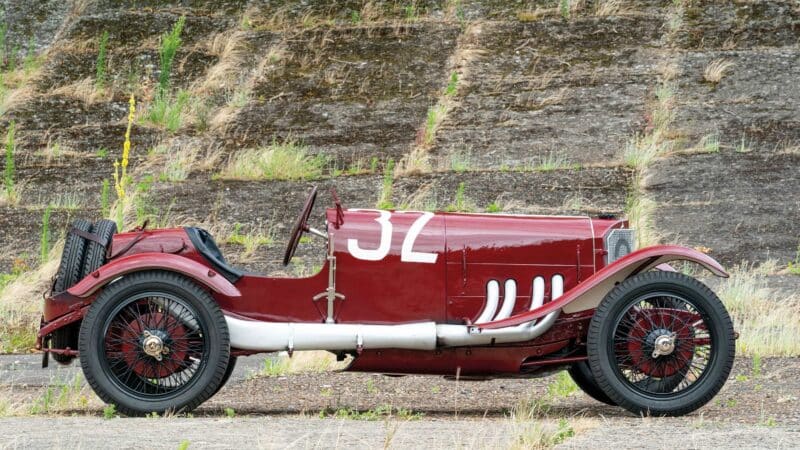
The Mercedes’ red paintwork is the exact same shade as in the 1924 Targa Florio – but not the usual white of Germany…
Craig Pusey
It’s strange that when you think of all those great pre-war Mercedes-Benz racers from leviathan white SSK and SSKL sports cars to the all-conquering W25, W125, W154 and W165 ‘Silver Arrows’ grand prix machines that this one never figures.
Perhaps it’s because, with a mere 2 litres under the bonnet, it is seen as being somehow a junior partner in the Stuttgart stable of racing greats, or maybe it’s that red paint still confusing people to this day, just as it was always intended to in period, of which more in a minute. Maybe it’s because it isn’t actually a Mercedes-Benz at all. It wasn’t until 1926 that Germany’s two great carmakers merged, so this 1924 car is actually just a Mercedes, built by Daimler, and you only need to spot the lack of the Benz laurel leaves around its badge to know it. But might it just be that in period it didn’t really have a name? When I asked those responsible for it today what it was called, they looked at me as if I’d gone slightly mad and said, “Mercedes Targa Florio, of course.” But when I asked what it had been called before it won what was then the world’s greatest sports car race, the answer is a less-assured, “I guess Mercedes 2 Litre,” is the best that I am offered.
But 100 years ago, win the Targa Florio it did and, dating before the Mille Miglia and less than a year after the first running of the Le Mans 24 Hours, the world’s greatest sports car race it undoubtedly was.
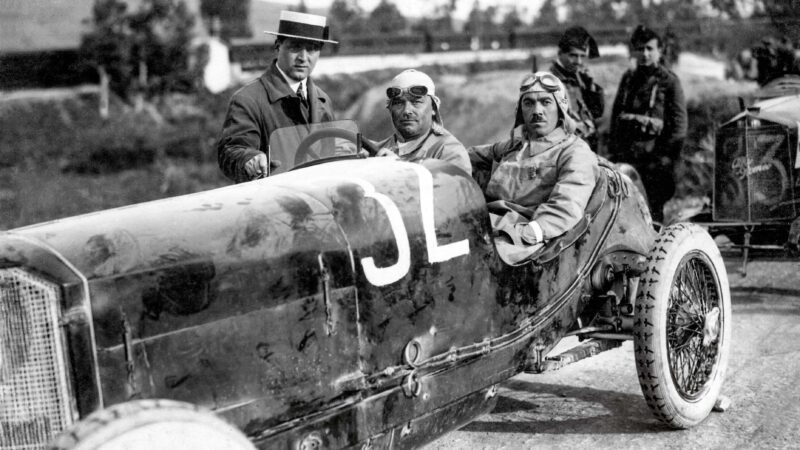
Mercedes No32, 1924 Targa Florio, with Christian Lautenschlager, age 47, at the wheel
Mercedes-Benz AG
And quite a race it turned out to be. It was a cracking entry with works teams from Mercedes, Alfa Romeo and Fiat all thought to be in with a shout. But it was Alfa Romeo that was perhaps a favourite with its 3.6-litre RLTF racer and not only the great Antonio Ascari on the books but Giulio Masetti, winner of two of the previous three Targas. Tragically both already had less than two years to live, Ascari perishing after a crash at Montlhéry in July 1925, Masetti trying for his third Targa win in 1926.
To counter the threat, Mercedes drove four of its new racers from Stuttgart to Naples to catch the ferry to Palermo. One would act as a spare, the others to be driven by one Alfred Neubauer, then a mechanic turned racing driver who’d latterly find rather more fame as a team manager, plus Christian Lautenschlager and Christian Werner. The former was a once-great racing driver and two-time winner of the French Grand Prix (1908 and 1914) but now aged 47, only a part-time racer and past his best.
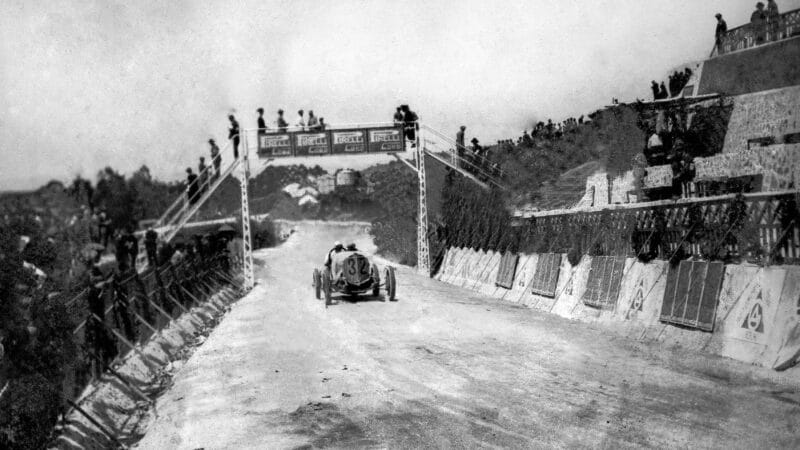
Ferdinand Porsche reconfigured the Mercedes for the 1924 Targa Florio, vastly improving its reliability.
By contrast, at 31, Werner was in his prime. Good enough to have been beaten only by Masetti the year before, he’d go on to finish second in the 1927 German Grand Prix and then win it the following year. He was also the great Rudolf Caracciola’s team-mate in 1930 in their immense if ultimately unsuccessful single-handed attempt to dethrone the mighty Bentley works team at Le Mans that year.
But by the start of the fourth and final lap of the 66-mile Grande Madonie circuit, it boiled down to a straight fight between Werner and Ascari, Werner ahead on time, Ascari on the road and narrowing the Mercedes lead all the while. The scene was set for one of the great finishes.
In the Mercedes pit, stopwatch in hand, stands another person who’ll go on to be quite well known in the motoring world, waiting for Ascari to appear. He can hear the Alfa’s straight-six engine coming, coming, coming, sooner than anyone at Mercedes liked or expected. His name is Ferdinand Porsche. And then – nothing. The Alfa engine cuts, seizing solid some say 30m short of the line.
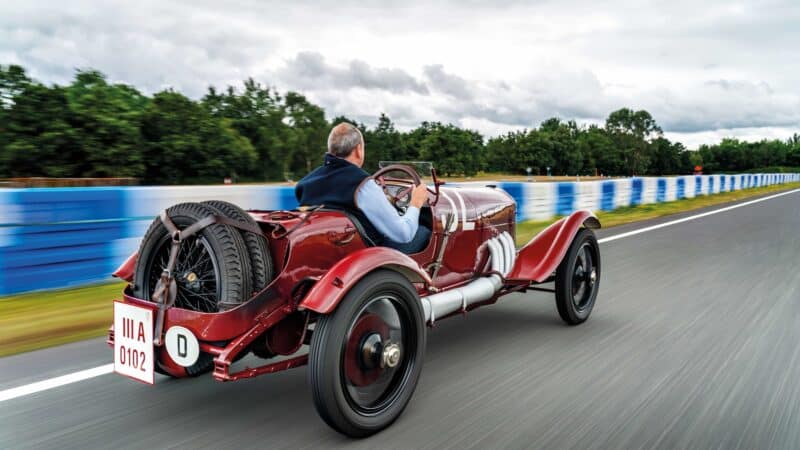
A century later at Targa Surrey
Craig Pusey
Ascari tries to restart it but no avail. He tries to push it, shouting at the crowd to keep away as he knows any external assistance with the car means instant disqualification. But the crowd, desperate to see an Italian in an Italian car win on Italian soil, are less familiar with the competition rules and want only to see their hero over the line, thereby guaranteeing the one thing they’d all have given limbs to avoid: a German victory in a German car. But Werner wins, over 7min 30sec clear of Masetti’s Alfa in second, with Lautenschlager 10th and Neubauer 15th.
And that was that. The newly christened Mercedes Targa Florio was retired as Mercedes decided to build a new generation of bigger, more brutal racers. Two of the four cars disappeared leaving one – Neubauer’s car – in a private collection, and the one you see on these pages.
“If Werner’s victorious machine is out there, maybe rotting in a barn, no one is saying”
For decades it was believed to be the winning car, but when Mercedes-Benz Classic came to research its history from its vast archive and examining numbers stamped on the chassis and elsewhere, it became clear it is not: it is the Lautenschlager car. If Werner’s victorious machine is out there, maybe rotting in a barn or squirrelled away, no one is saying.
But what, exactly, is this car anyway? Its original design was by Paul Daimler, son of the great Gottlieb Daimler and, in the early 1920s, was absolutely state of the art. It predates the similarly 2-litre Bugatti Type 35 but compared to what would become the most successful pre-war racing car of all, the Mercedes had twin overhead camshafts and four valves per cylinder while the Bug had just three valves for each of its eight cylinders, all opened and shut by a single camshaft. The Mercedes was supercharged too, an innovation that would not be added to the Bugatti until 1926.
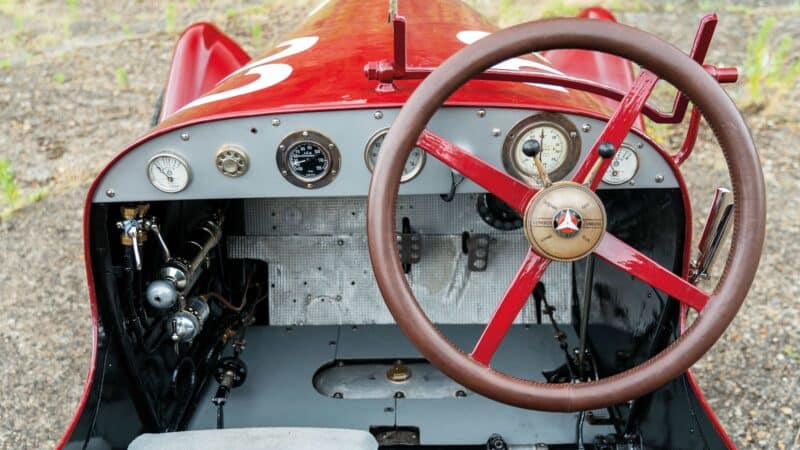
As you’ll notice, the restoration of this 100-year-old racing car has been carried out to high standards of authenticity
But the car was a disaster. It produced amazing power for a 2-litre four-cylinder motor of that era, (upwards of 125bhp putting it on a par with the best engines of double the capacity without the associated weight penalty), just not for very long.
It went to the Indy 500 in ’23 and while good enough for as much as 119mph on the straights, none ran as it should, moving Lautenschlager to observe, “The $50,000 which we could have won got stuck in the car’s exhaust system and inlet tracts.”
Fixing it was job No1 on the to-do list of recently arrived Herr Porsche, who kept the basic configuration of the engine but changed everything else. When he was done the engine had no more power but used a vat less fuel and was faultlessly reliable. He also modified the chassis, widening the track to prepare it for the twists and turns of the Targa. He did something else too, fitting new gear ratios that dropped top speed from almost 120mph to just 75mph, trading the ultimate velocity that would be of use just once on a lap – on the four-and-a-half mile straight that ended each tour – for the raw acceleration needed everywhere else.
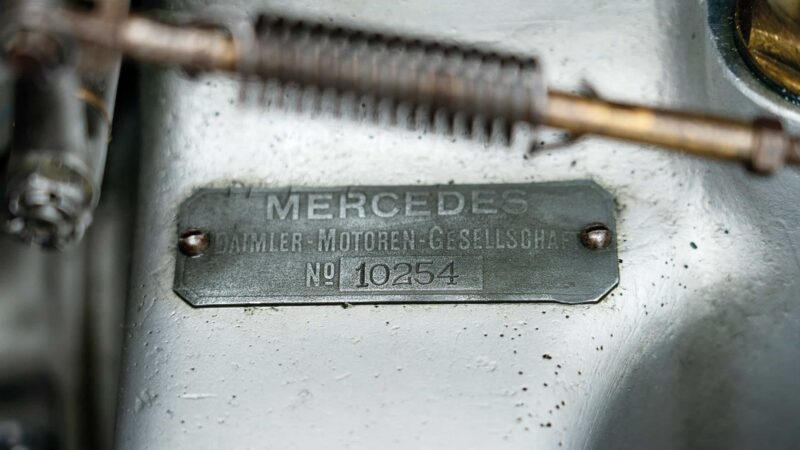
The car predates Daimler’s merger with Benz & Cie

Note the paint strokes
Craig Pusey
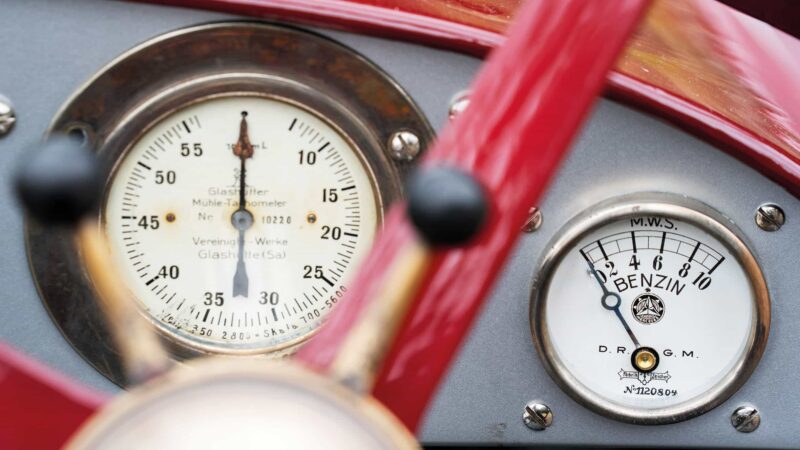
Plenty of dials but none for oil pressure
Craig Pusey
And that is the form in which I greet the car today. The restoration is absolutely stunning, and the biggest compliment I can pay it is that the car looks as I’d imagine it would have done a century ago, which means you can see each stroke of the paintbrush as it applied precisely the right hue of linseed-based pigment (sampled from a tiny fragment of carbon-dated original paint found on the fuel tank) entirely by hand. What it does not look like is a car restored to 2024 standards requiring welding goggles just to look at its brilliance. Thanks to that archive, the men and women of Mercedes-Benz Classic know precisely how it should be, and that is how it is.
“Herr Porsche kept the basic configuration of the engine but changed everything else”
I climb in over the side by the passenger seat. All the Mercedes carried riding mechanics on the Targa to watch the dials, help if there was a puncture, hand-pump fuel if the electrics died and so on. But there’s so little space the passenger seat is actually set well back from the driver’s, the only way two people could exist onboard in any comfort at all. Slide across and see what we have here. A splat of black, white and yellow gauges, telling me fuel level and pressure, engine revs, water temperature and, curiously enough, the time. More curiously, there’s no measure of oil pressure – Ferdie must have been very confident of his motor’s strength. The pedals are laid out as you expect from a racing car of this era with the accelerator in the middle and the brake on the right; but there’s also a brake lever outside the car which, while it acts upon only the rear shoes and not all four drums as does the pedal, I’m told is the preferred way of slowing the vehicle. Fair enough.
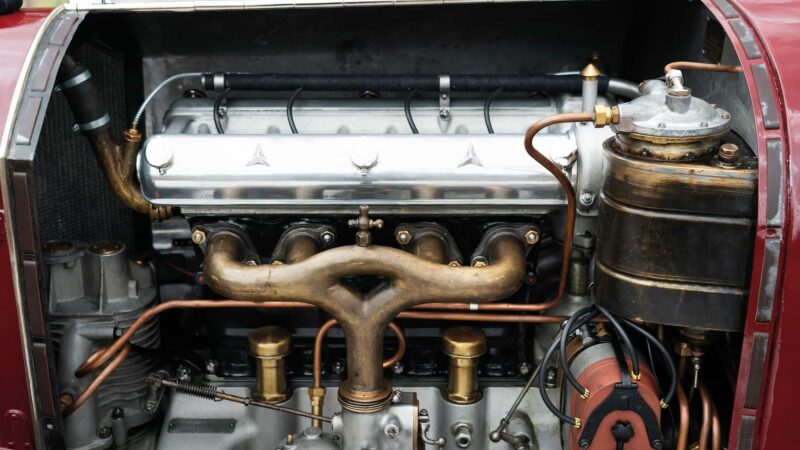
Its 2-litre engine is clean as a whistle.
Craig Pusey

Centre pedal is the accelerator.
Craig Pusey
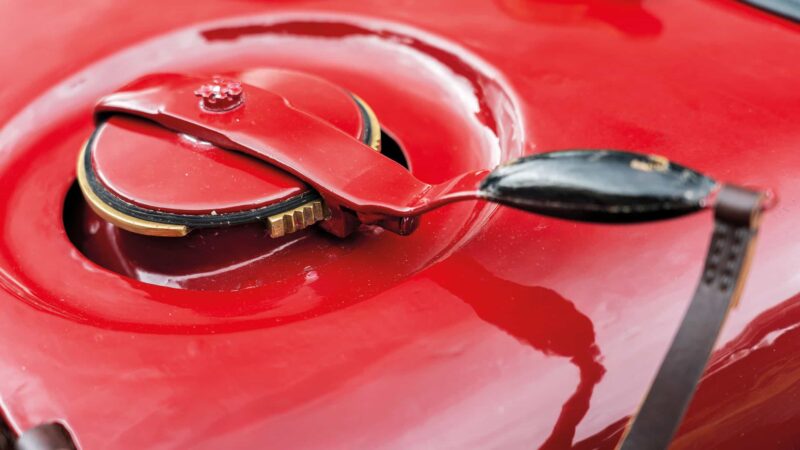
Attention to detail is exquisite.
Craig Pusey
I note fuel lines over the far side of the car and also that they are duplicated and able to be swapped over in seconds, another lesson probably learned the hard way somewhere. But that’s about it: retard the ignition on the steering wheel, leave the hand throttle alone, flick on the magneto, give a thumbs up to the bloke with the starting handle, wait while another mechanic makes sure I really have retarded the ignition before I break the thumb or wrist of the poor bloke at the front, get a thumbs up from him, watch him give it a big swing and catch it on the throttle the moment it fires. All easy enough.
The noise, it must be said, is not pretty. Think of some classically howling twin cam, 16-valve motor, a BDR in an Ford Escort on an historic rally stage for instance – now think the opposite. The Porsche-modified 2-litre is rough and angry, not to mention ridiculously sensitive to the throttle pedal. The track we’re on at Mercedes-Benz World just next to Brooklands is tight and twisting, the perfect environment for a Targa Florio car, so there seems little left to do but go and drive it.
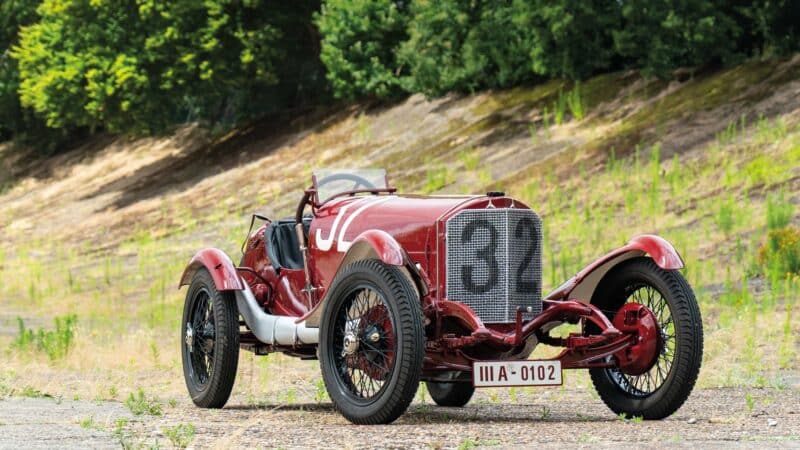
For years it was thought this was the Targa Florio winner
Craig Pusey
Goodness the gears are short. First is for pulling away, second getting up to speed, third and fourth for staying there. The Mercedes drivers would have done near enough the entire race rowing back and forth between these two ratios and here, in the badlands of Surrey, I’m doing the same.
“The joy of this car, and I suspect the reason it did so well, is that it’s a delight to fling about”
It’s actually quite straightforward to drive as very old race cars often tend to be. Vintage road cars with heavy bodies and vast engines can be complete pigs when it comes to the dark art of changing gear in those pre-synchro times (ask anyone who’s driven an 8-litre Bentley and they’ll bore you senseless on the subject) because they carry so much inertia and have yawning chasms between their gear ratios yet still need to be expertly timed if they are to be completed without agonised crunching and crashing emanating from the transmission. In the Targa Mercedes so long as you move your hands fast and double dip the clutch on the way up it’s pretty seamless; coming down you just need to remember how few additional revs are required to be added by your right foot because the gears are so insanely tightly stacked – with that throttle response a brush of the pedal is usually enough.
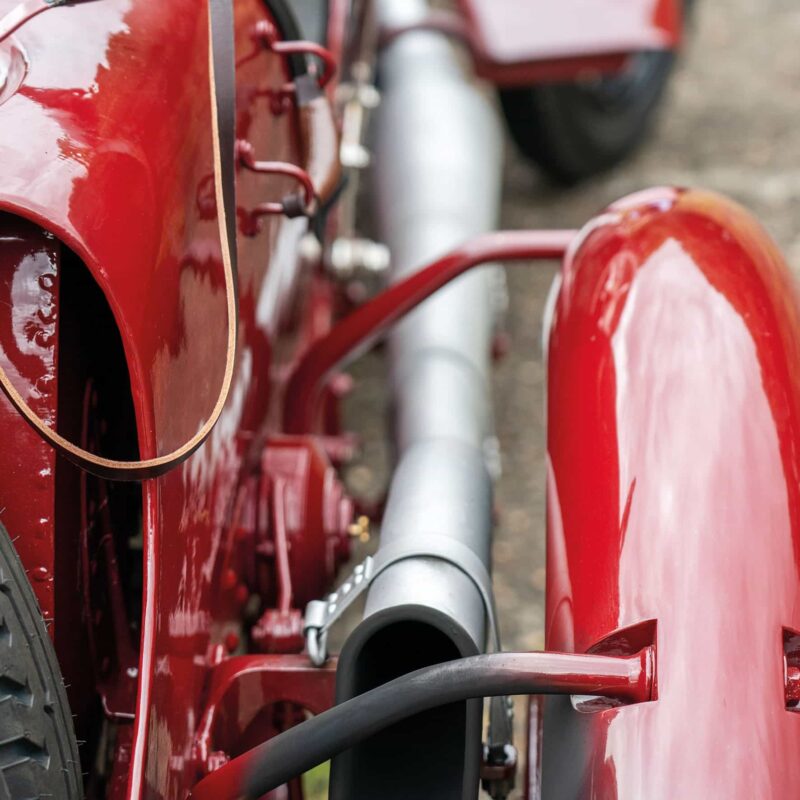
The rebuild started in 2022
Craig Pusey
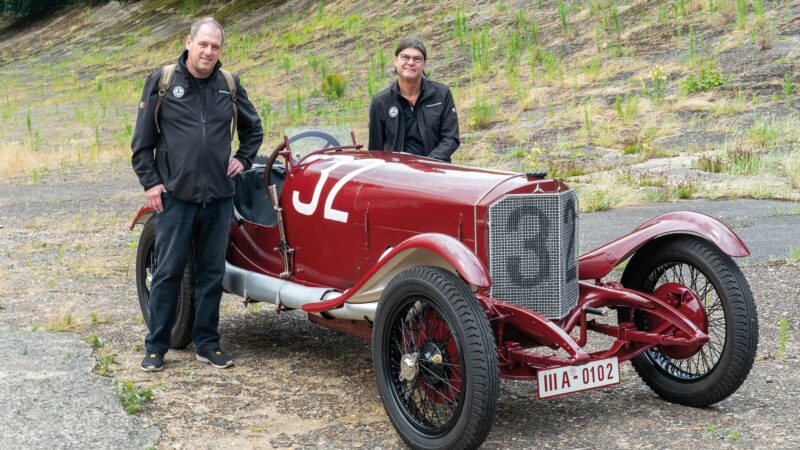
DIetmar Krieger, left, and Manfred Oechsle, who worked on the car.
Craig Pusey
But actually the joy of this car, and I suspect the reason it did so well in Sicily all those years ago, is that it’s just such a delight to fling about. It’s light, accurate, nimble and so long as you make sure you get the nose in first, only too pleased to be steered from the rear. If you’re pulling the handbrake you do run the danger of running out of limbs because it’s not actually possible to use it to slow while downshifting at the same time, but so long as you do it all in an orderly fashion you can trail it in, power it out, slide it about and generally have a great time.
I hope Herren Werner, Lautenschlager and Neubauer had time to chuckle at their good fortunes to be on those roads in such machines, while others struggled to manhandle far larger, heavier, more powerful motors around the island.
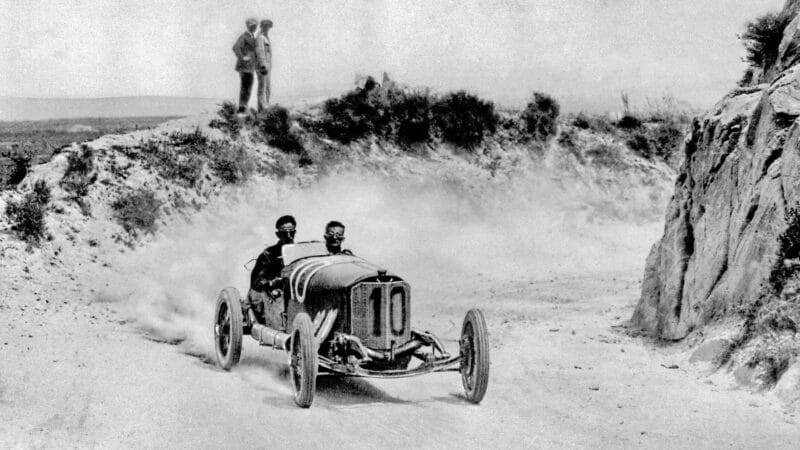
The winning car, driven by Christian Werner.
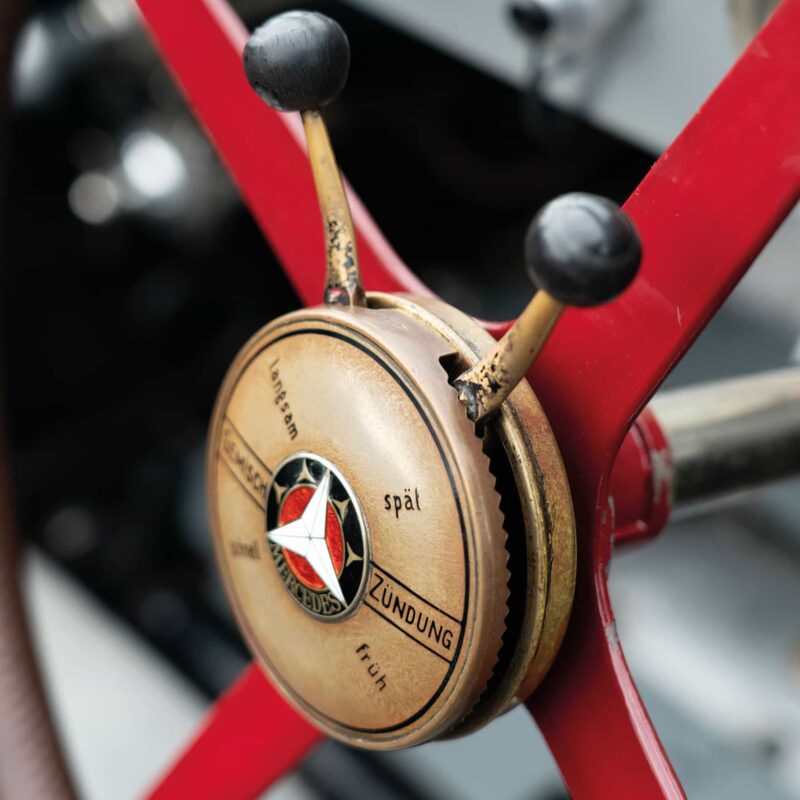
once familiarised with the controls it was easy to drive
Craig Pusey
And I hope they laughed even more every time they were cheered on by the crowds, convinced by that red paint they were watching Italian cars come past, for that was indeed its true purpose.
This, then, is a kind of Mercedes racing car you don’t hear about much these days: the really early cars were monsters because that’s the only way you could get any speed out of them, then shortly after the merger with Benz, monsters they became once more. Between these two vast pillars sat the Targa Florio, obscured from sight for a century, but now back, and in the rudest of health. How wonderful it has been to make it acquaintance and learn a little more about its extraordinary story.
Mercedes 2 litre ‘Targa Florio’
Engine 2 litres, four cylinders
Power 125bhp-plus with supercharger; 66.5bhp without
Max Speed 75mph
Transmission Four-speed manual
Suspension Front: rigid axle with semi-elliptic springs, friction shock absorbers; rear: rigid axle with underslung semi-elliptic springs, friction shock absorbers
Wheels/Tyres Wire spoke centre-mounting/765 x 105
Weight 921kg
